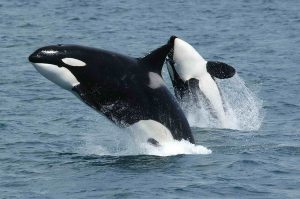
(image from commons.wikimedia.org)
In our modern society individuality, striking social media profiles and straight careers are valued more than ever. We constantly need to prove ourselves and stand out. Naturally, science, research and careers have always been competitive. All of us should follow our dreams and the pursuit of happiness. However, as latest developments across the globe show formidably, our world has become very small and corporate and political decisions too expansive to assume a separation of individual and society is possible and makes sense. Whatever happens somewhere is probably influencing us in one way or the other. Fascinatingly, alarming events somehow do not lead to enhanced engagement of the individuals in corporate developments. Of course, people tweet a lot. But do they engage or comment? And why do we observe so many lone warriors in times of “social media”? Somehow it seems as if the glue connecting individuals to each other has passed its expiration date. May empathy play a role in this context? Speaking of which: Do you know who is really empathic? Well, you’ll be astonished: orcas are!
Beauty and the ocean
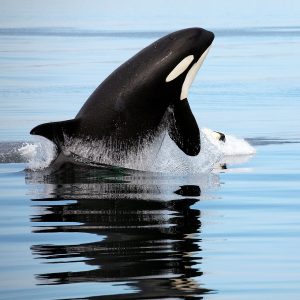
(image from commons.wikimedia.org)
Orcas are fascinating giant mammals of the ocean people marvel at due to their impressive appearance, strength and beauty. As travelers of the oceans they are free, devoid of natural enemies and are a reminder of the different world awaiting us far below sea level. We can only enter this world when leaving behind the fast-paced millions of loud people with their many vehicles, tight schedules and crowded cities. Far away from our everyday lives lies an environment where the watch hands turn slower and all the city and human noises are absent. Well, at least if Atlantis doesn’t count. We only see the top layer of light blue water which becomes darker and turns black the deeper we dive into it, approaching an environment that cannot be reached by light anymore – a world that could not be any more different from ours. Still, there are valid parallels. Orcas have intriguing features that do not meet the eye but we may want to think of. Why? Because “with great power comes great responsibility,“ as we know since the “Spider-Man“ movies were released. Thus, being the self-defined crown of creation requires some self-reflection from time to time, e.g. for inspiration and improvement. And no, although our oceans’ pollution and its impact on the millions of lives below sea level is dramatic, this will not be the focus of this article.
Beauty and behavior
You can tell that I’m deeply fascinated by orcas and their breathtaking outward appearance. But there is more to those mammals than that. Orcas (Orcinus orca), or killer whales, are the largest member of the oceanic dolphin family – yes, the dolphin family! Further, their diversity raises the question whether orcas should be classified as more than one species, since at least three ecotypes can be distinguished nicely(1). But all of this is more or less commonly known. Less known is that the orca pods are in fact assumed to be the most complex family structures in the animal kingdom(2). Amongst scientists, orcas are famous for their vocal behaviors and sophisticated hunting techniques. Further, language, behavior and hunting strategies are often specific to a particular orca group and passed from one generation to the next. With their truly complex vocal and behavioral cultures, orcas are mammals with an independent evolution of cultural faculties that have not been observed outside humans before(3).
Beauty and the orca brain
With their brain weighing as much as 6.8 kilograms, orcas have the second biggest brains among marine mammals(4). The only mammal with a bigger brain is the sperm whale(5)(6). But the size is not the only fascinating feature of the orca brain. While some parts of the brains are smaller in dolphins and whales, there are other parts which are larger and more elaborate than in the human brain(7).
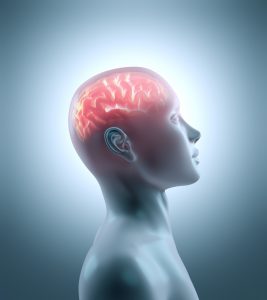
(image from colourbox.com)
Compared to the human brain, three areas in the orca’s brains stand out as enlarged: the insular cortex, its surrounding operculum, and the limbic lobe(8). So, what are these brain regions good for? Whereas the frontal operculum is correlated with speech in humans, the insular cortex is crucial for the ability to hear and process sound(8). Moreover, it has been hypothesized that a part of the operculum innervates the nasal respiratory tract, which is the origin of orca vocalization(9). In the context of their elaborate communication, structural differences of sound patterns between different orca pods are described as dialectical variation and a learned behavioral trait used for communication(10). Thus, the enlargement of these two brain areas seems to fit to various behaviors and fascinating characteristics of these mammals.
Brain and limbic lobe – a matter of size?
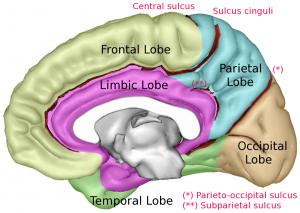
(image from commons.wikimedia.org)
The third structure of importance when taking a closer look at the orca brain, is the enlarged limbic lobe. Importantly, the limbic system is the emotion-processing area in mammalian brains. It is relevant for the emotional life, behavior and memory formation (8).For a long time, spindle cells that are associated with limbic system processing of social organization and empathy, were assumed to be unique to the great apes. Now researchers found that the relative number of spindle cells is in fact larger in the brain of orcas than in the human brain (11).This expansion of cortical areas nicely correlates with the coordinated group behavior and social interaction observed in orca pods(12). As Lori Marino summarized, it suggests that there is something that evolved or adapted over time that cannot be found in humans but in orcas(7).
Brain development – between individuality and society
Conclusively, the described elaboration on the limbic area indicates that orcas are doing something very sophisticated and complex while processing emotions, maybe leading to a level of social cohesion that is unmatched in other mammals, including humans(7). Hence, communication, movement amongst each other, as well as their social lives denote that there may be something about their sense of self that is not only an individual but depends very much on their social group, as Lori Marino stated(7).
Orca empathy
Since many orca pods studied rely on strong bonds of the individuals and promote learning through communication and collective solutions when challenged, they are giant mammals with a high level of the aforementioned empathy which is defined as the “action of understanding, being aware of, being sensitive to and vicariously experiencing the feelings, thoughts and experience of another.“(13)
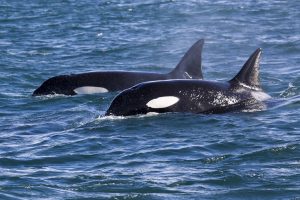
(image from commons.wikimedia.org)
Of course, orcas and humans differ as much as their environments do. But again, there are more parallels than we might have realized before. Is it time to let marine mammals inspire us with their group behavior, bonds and empathy? Has mutual group strength not always been the corner stone of corporate development? These empathic mammals got me thinking. Wouldn’t it be – even in modern societies and during digitalization – beneficial if a few more of us were inspired by orcas and a little bit more orca themselves: empathic and an active member of a society we depend on and commit to? I think empathy may be the required key to our society’s castle that allows us to develop in a shared and protected environment. And I believe that this castle could stand robust and persist through time instead of becoming a castle in the air one day – if enough of us decide to protect the key – being more orca!
References
(1) http://www.facts-about.info/
(2) https://www.onegreenplanet.org/animalsandnature/amazing-facts-about-orcas/
(3) Rendell L, Whitehead H (2001) Culture in whales and dolphins. Behav Brain Sci 24(2):309-324; 324-382.
(4) https://phys.org/news/2010-03-smart-killer-whales-orcas-2nd-biggest.html
(5) http://news.softpedia.com/news/Top-10-Brains-83944.shtml
(6) DickeU, RothG (2016) Neuronal factors determining high intelligence. Philos Trans R Soc Lond B Biol Sci 371(1685). doi: 10.1098/rstb.2015.0180
(8) http://greymattersjournal.com/killer-whales-are-non-human-persons/
(9) Morgane PJ, Jacobs MS, MacFarland WL (1980) The anatomy of the brain of the bottlenose dolphin (Tursiops truncatus): surface configurations of the telencephalon of the bottlenose dolphin with comparative anatomical observations in four other cetacean species. Brain Res Bull 5 (Suppl 3):1–107.
(10) Deecke VB, Ford JKB, Spong P (2000) Dialect change in resident killer whales: implications for vocal learning and cultural transmission. Animal Behaviour 60(5); 629-638.
(11) Bekoff M, Goodall J (2007) The emotional lives of animals: A leading scientist explores animal joy, sorrow, and empathy–and why they matter. Novato, Calif: New World Library.
(12) Marino L, Connor RC, Fordyce RE, Herman LM, Hof PR, Lefebvre L, Lusseau D, McCowan B, Nimchinsky EA, Pack AA, Rendell L, Reidenberg JS, Reiss D, Uhen MD, Van der Gucht E, Whitehead H (2007) Cetaceans Have Complex Brains for Complex Cognition. Plos Biology 5(5). https://doi.org/10.1371/journal.pbio.0050139
(13) https://www.merriam-webster.com/dictionary/empathy
(featured image from commons.wikimedia.org)

Larissa Mühlenbeck
